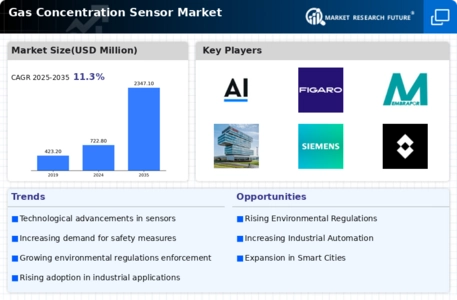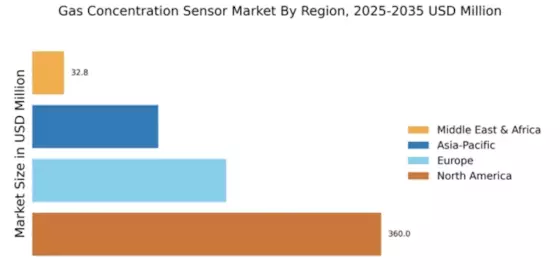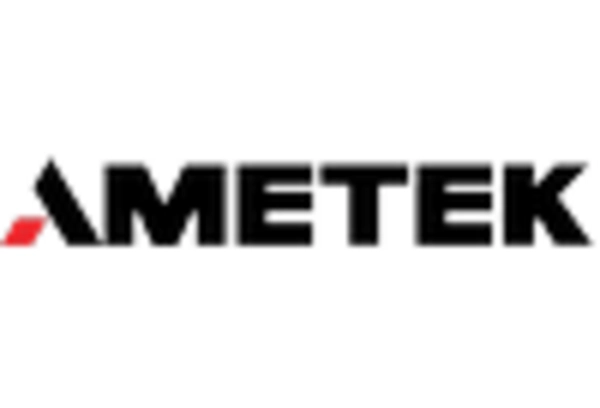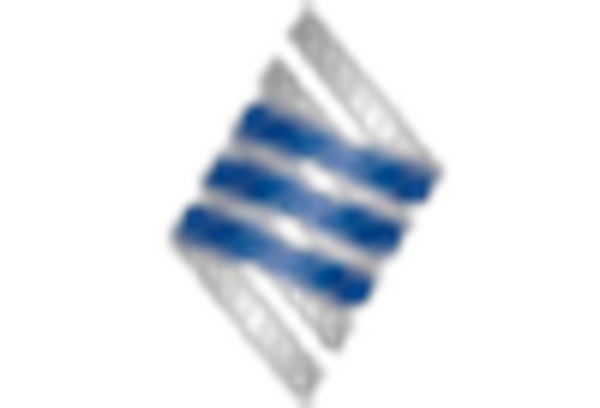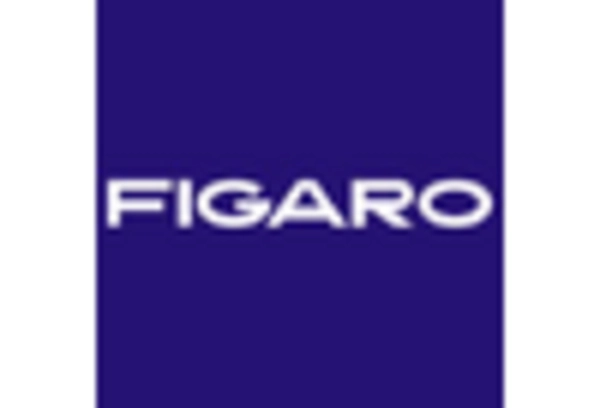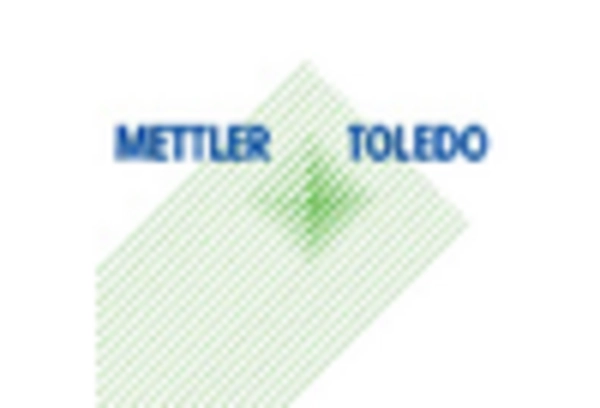Growth in Industrial Applications
The Global Gas Concentration Sensor Market Industry is witnessing substantial growth due to the expanding industrial applications of gas sensors. Industries such as chemical manufacturing, food processing, and pharmaceuticals are increasingly adopting gas concentration sensors to monitor and control processes. For example, in the chemical sector, sensors are utilized to detect hazardous gases during production, ensuring safety and compliance with industry standards. This trend is indicative of a broader shift towards automation and process optimization, which is likely to drive market growth. As industries continue to prioritize efficiency and safety, the demand for gas concentration sensors is expected to rise significantly.
Increasing Environmental Regulations
The Global Gas Concentration Sensor Market Industry is experiencing growth due to stringent environmental regulations aimed at reducing air pollution. Governments worldwide are implementing laws that require continuous monitoring of gas emissions from industrial sources. For instance, the European Union's Industrial Emissions Directive mandates that companies utilize advanced monitoring technologies, including gas concentration sensors, to ensure compliance. This regulatory push is likely to drive the demand for gas sensors, as industries seek to avoid penalties and improve their environmental footprint. As a result, the market is projected to reach 722.8 USD Billion in 2024, reflecting the increasing emphasis on environmental sustainability.
Rising Demand for Safety and Security
The Global Gas Concentration Sensor Market Industry is significantly influenced by the rising demand for safety and security in various sectors. Industries such as oil and gas, manufacturing, and mining require reliable gas detection systems to prevent hazardous situations. For instance, the implementation of gas sensors in confined spaces has become critical in ensuring worker safety and compliance with occupational health standards. The increasing awareness of workplace safety is likely to propel the market forward, as organizations invest in advanced gas monitoring solutions. This trend is expected to contribute to the market's growth, with projections indicating a value of 2347.1 USD Billion by 2035.
Technological Advancements in Sensor Technology
The Global Gas Concentration Sensor Market Industry benefits from rapid technological advancements in sensor technology. Innovations such as miniaturization, enhanced sensitivity, and integration with IoT devices are transforming how gas concentration sensors operate. For example, the development of MEMS (Micro-Electro-Mechanical Systems) sensors has led to more compact and efficient devices that can provide real-time data. These advancements not only improve the accuracy of gas detection but also expand the application range across various sectors, including healthcare and automotive. Consequently, the market is anticipated to grow at a CAGR of 11.3% from 2025 to 2035, driven by these technological improvements.

